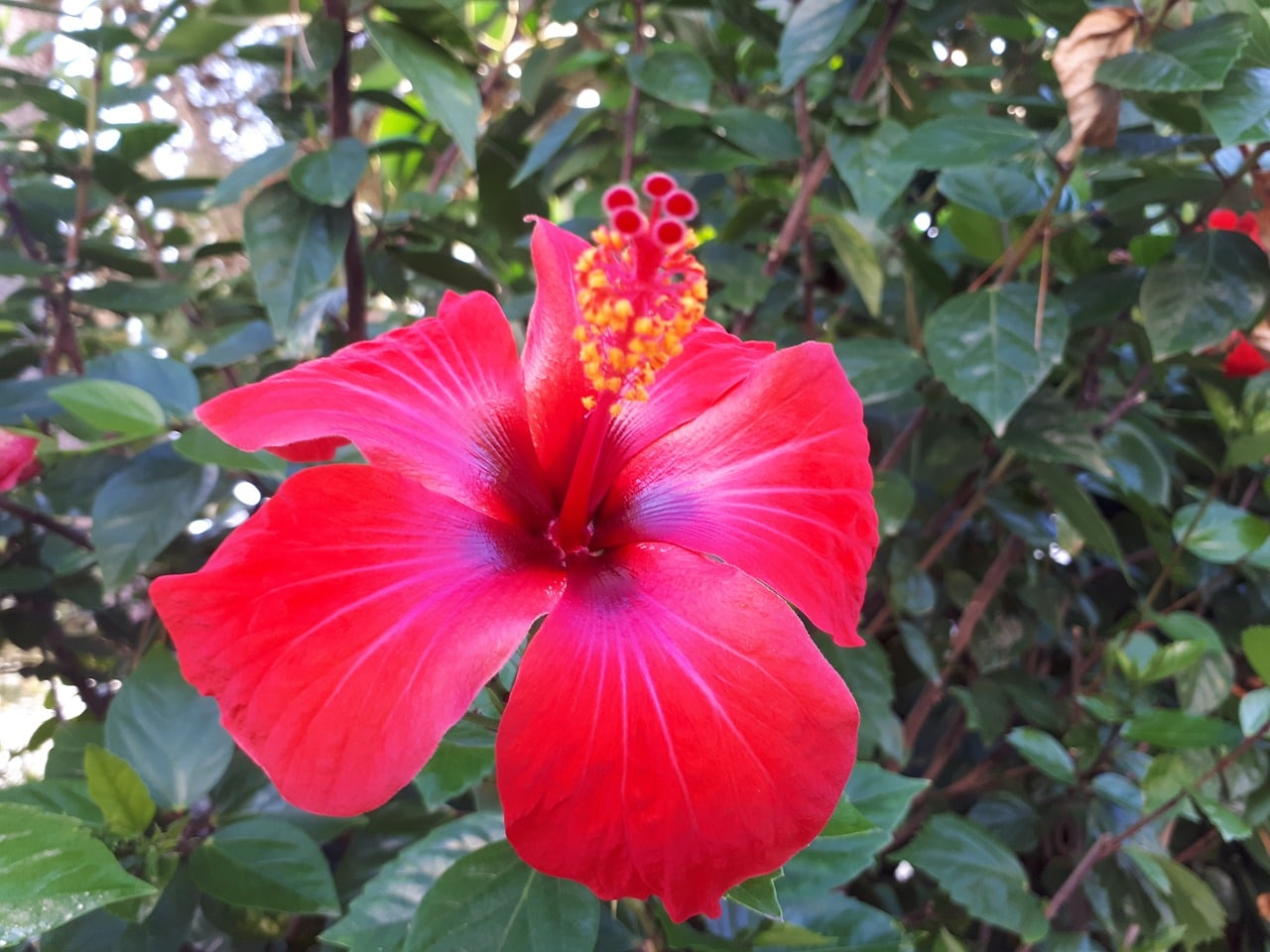Are you looking to find out how to grow hardy hibiscus from seed? Hardy hibiscus (Hibiscus moscheutos), also known as swamp rose mallow, are naturally found in swamps, marshes, or in moist areas nearly around rivers and ponds. These plants grow from at least two feet tall up to a maximum of ten feet tall, with flowers that are four inches to ten inches wide.
The Hibiscus genus belongs to the mallow family (Malvaceae) and it contains several varieties of shrubs, plants, and trees. These plants originated in tropical climates, but they can survive when planted indoors and in containers as well. Many gardeners grow hardy hibiscus because of the beautiful flowers they produce, while others plant them because of the fiber they produce that could be used to make clothing.

Germination
Hardy hibiscus seeds take a long time to germinate, so you may need to take the seeds indoors or in a greenhouse for about two to three months before frost occurs. To speed up the germination process, you can use a sharp knife to nick the round end of the seed coating, allowing moisture to enter. Soak the hardy hibiscus seeds for about eight hours in lukewarm water.
Planting/Transferring of germinated seeds
After the germination process, the next step is to plant the seeds into a tray, small containers, or straight into a garden bed. Choose a potting soil or seed-starter mix for your hardy hibiscus seeds. Plant the germinated seeds for about a quarter-inch deep in your seed-starting mix or potting mix, keep it warm, and in sunny conditions – at least 75 to 85 degrees Fahrenheit.
If all goes well, your planted germinated seed will sprout after two to three weeks. If you planed your hardy hibiscus plants indoors, you will need to place them into medium size pots to manage and accommodate their growing size. Young hardy hibiscus plants are extremely fragile particularly in their stems, so you must be careful in moving them outdoors; yard, bed, big pots. Do not plant them outdoors unless they are strong enough to survive in adverse temperatures.
Last Frost Date
After the danger of frost has passed you may start to harden-off your hardy hibiscus seedlings that have already grown. You can take them outside to acclimate for a few hours a day. Keep in mind that hibiscus plants naturally grow in swampy and moist areas. This means you’ll need to create a climate similar to warm, swampy areas.
Find a Fixed Area to Plant Them In
Hibiscus plants can grow up to ten feet tall, so you need to set an area where you can plant permanently your growing hardy hibiscus flower. Transferring the hardy hibiscus seedlings must be handled carefully.
Dig a hole in your fixed area where you want to transfer your hardy hibiscus flower, loosen the soil up to one foot deep. Set your hardy hibiscus inside the hole with soil then temporarily stop for a while at the halfway point. You must avoid placing any soil on top of the root ball to prevent suffocating the plant that will cause damage and failure to grow.
Water Your Plants
When your hardy hibiscus flower plants are transplanted properly, it’s important to water them carefully. Since hardy hibiscus naturally grows in watery or moist areas, you should make sure that it will not get bone dry. The soil should remain moist at all times, but not wet to avoid root rot.
Tips on How to Take Care of Hardy Hibiscus Plants
Like other flower plants, particularly perennials, you must have at least a few minutes every day to check on your hardy hibiscus plants. They grow healthier when carefully maintained. At least having mere time taking care of your plant, in return, expected bloom and produce are assured.
Considering the weather conditions of planting such as perennial type plants, will help you to have a lesser tendency of failed growth. Frost dates are dangerous to this type of plant and taking note of it is necessary to have a proper dated schedule in planting plants like this.
It’s important to regularly examine your plants for pests. Most pests are too small, so you’ll need to really get in there to be able to see harmful insects that are attacking your plants. Also, look for symptoms of diseases that can affect your plant. If not mitigated as soon as possible, your plant may not be able to survive for long.
The Benefits of Growing Hardy Hibiscus in a Greenhouse
There are several reasons why you need to consider growing hardy hibiscus inside a hobby greenhouse. For one, greenhouses protect your plants from pests and diseases that want to eat and damage your hardy hibiscus. It also protects your plants from the effects of unpredictable weather. Snow, heavy rain, storms, and high winds can easily damage a month’s worth of hard work. A greenhouse shields them from bad weather conditions so they can keep growing and producing more flowers.
Final Thoughts on How to Grow Hardy Hibiscus from Seed
Knowing how to grow hardy hibiscus from seed is necessary if you’re looking to grow these plants. While growing from seed requires time and effort, it’s also very rewarding. Once established, you’ll have beautiful cut flowers that will grace your backyard or vase.
